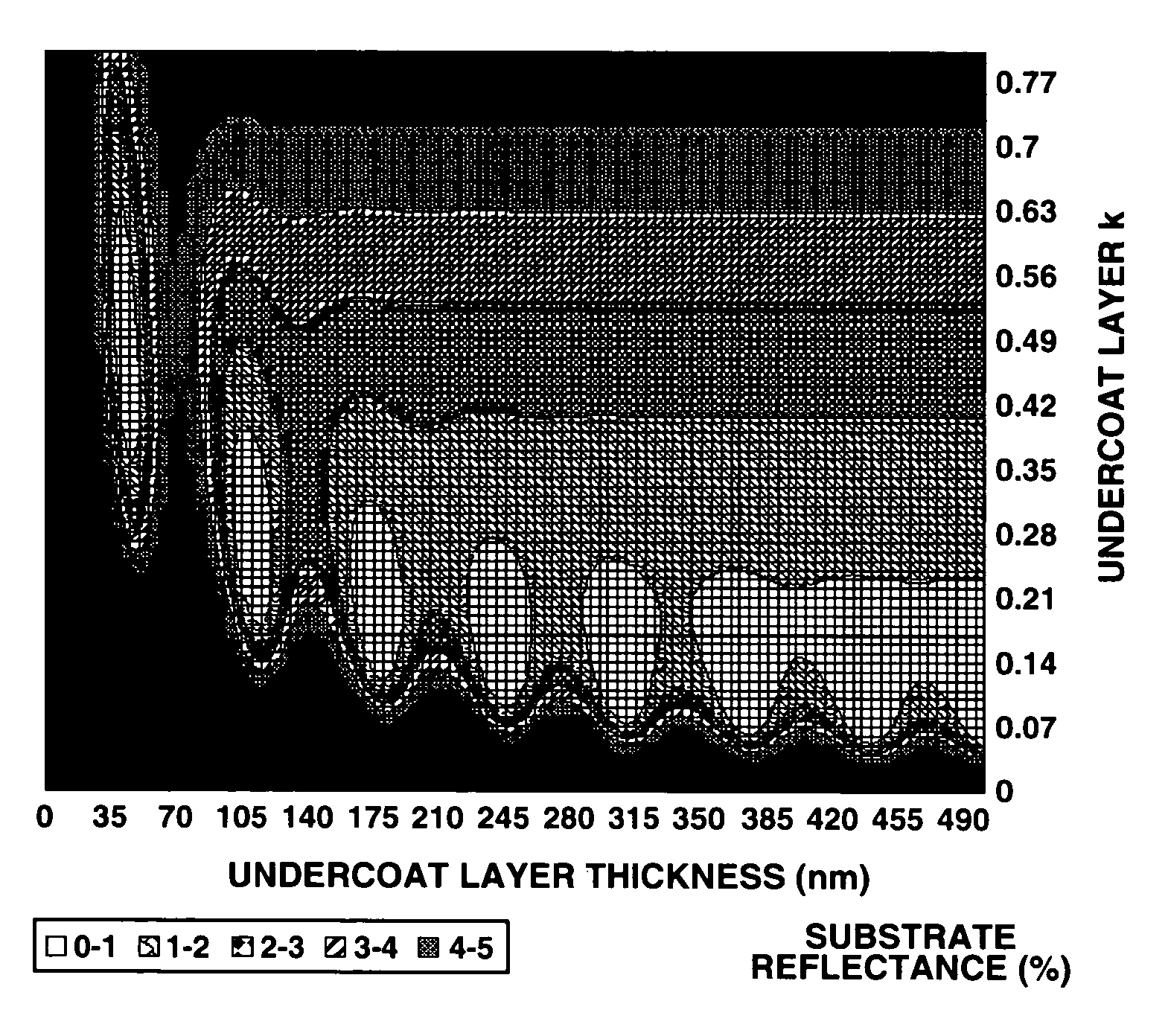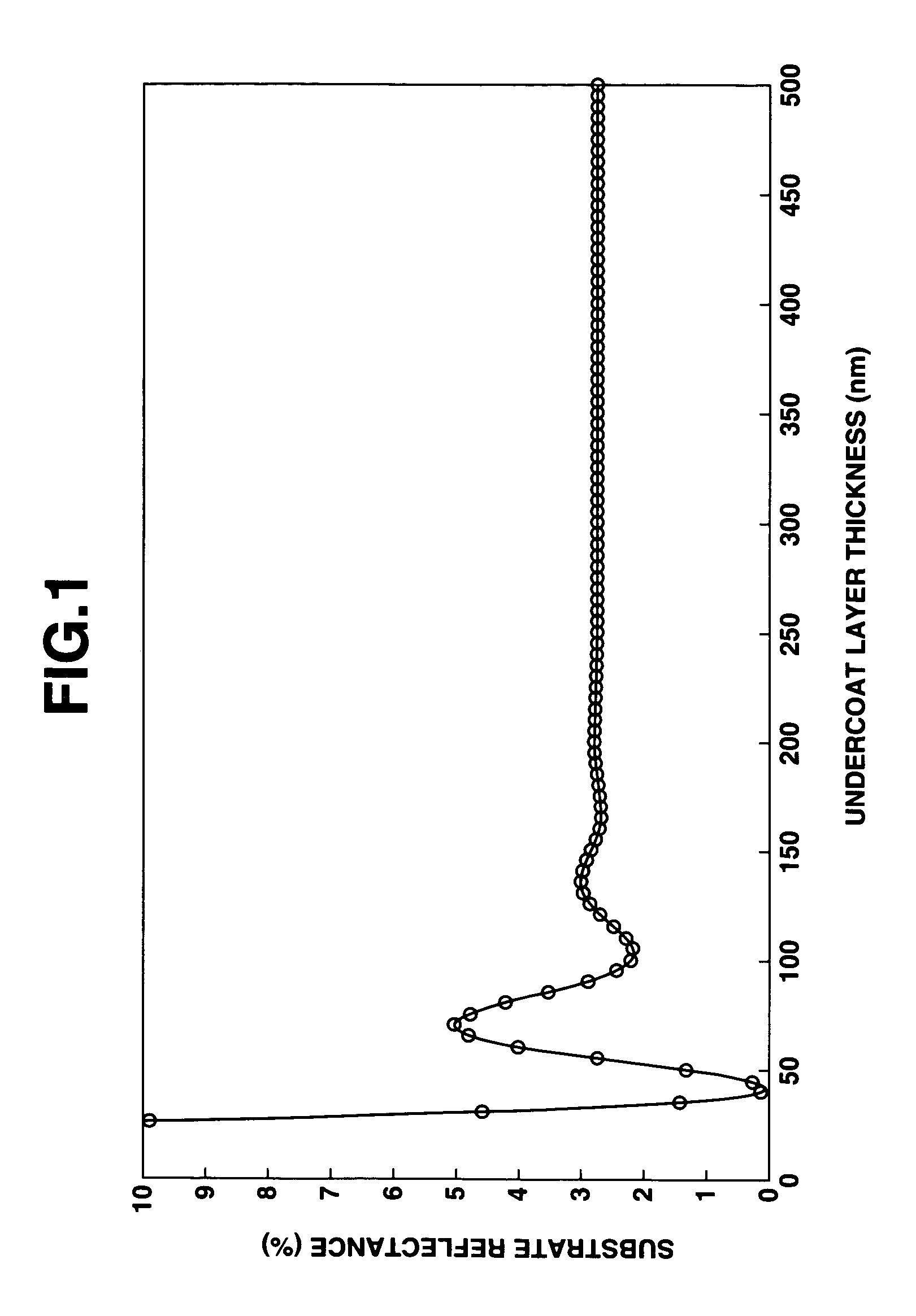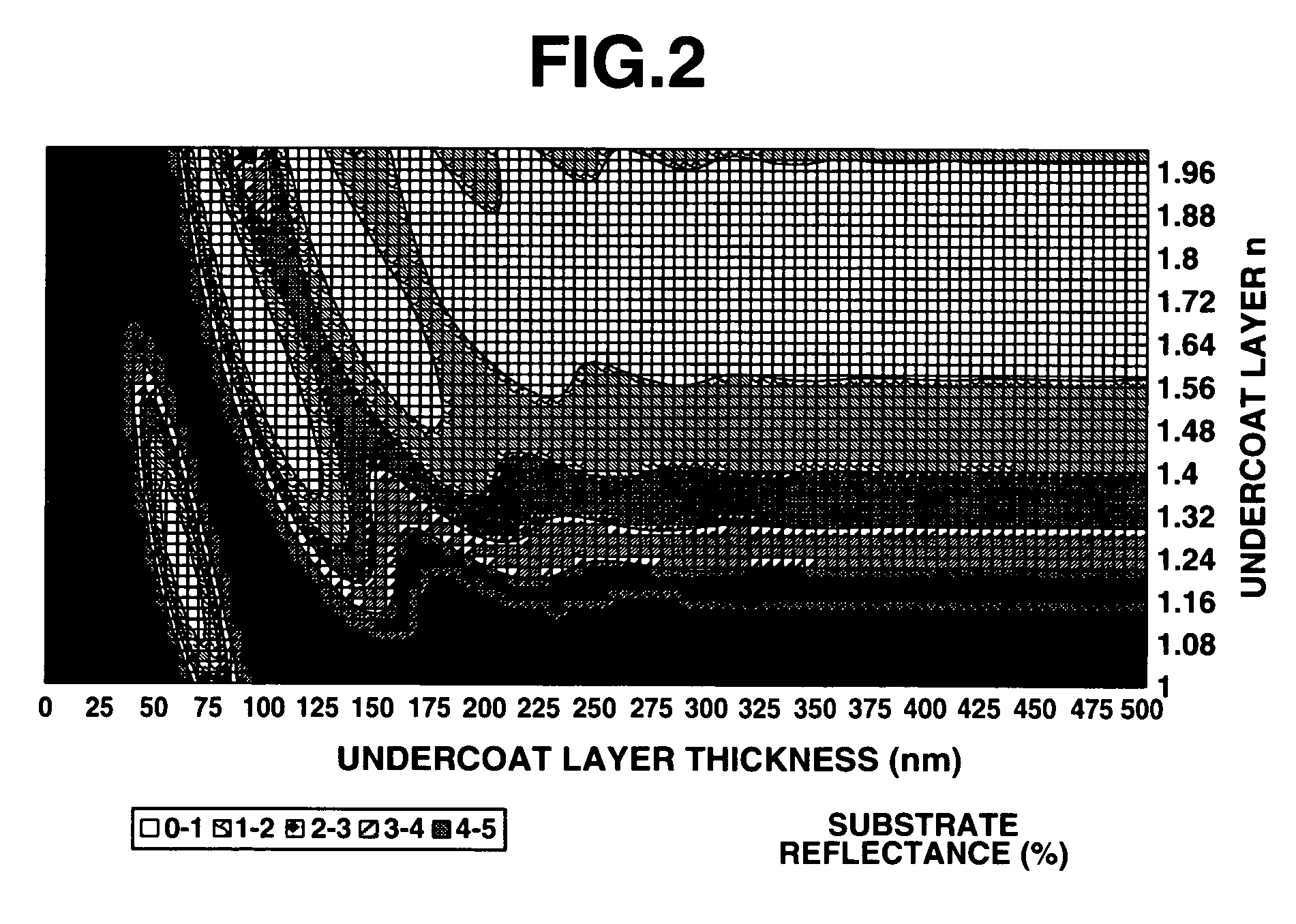Patterning process and undercoat-forming material
a technology of undercoat and patterning process, applied in the field of patterning process and undercoat-forming material, can solve the problems of affecting the etching resistance of the substrate, the approach of thickening the anti-reflective film encountering a limit, and the essential limit of resolution determined by the light source wavelength, so as to achieve the effect of improving the etching resistance and high transparency
- Summary
- Abstract
- Description
- Claims
- Application Information
AI Technical Summary
Benefits of technology
Problems solved by technology
Method used
Image
Examples
synthesis example 1
[0220]A 300-ml flask was charged with 144 g (1 mol) of 1-naphthol and 0.01 g of trifluoromethanesulfonic acid. With stirring at 50° C., 132 g (1 mol) of dicyclopentadiene was added dropwise over one hour. The solution was stirred at the temperature for one hour, heated to 150° C. and stirred for 2 hours, completing reaction. The unreacted reactants were removed by vacuum distillation. The reaction product was dissolved in 200 g of 1,2-dichloroethane, which was washed with water to remove the catalyst and metal impurities. On vacuum removal of 1,2-dichloroethane, 230 g of Polymer 1 was recovered.
[0221]The molecular weight (Mw) and dispersity (Mw / Mn) of Polymer 1 were determined by GPC using polystyrene standards. From 1H-NMR analysis, the ratio of naphthol to dicyclopentadiene in the polymer was determined.[0222]Polymer 1: 1-naphthol / dicyclopentadiene molar ratio=0.55:0.45[0223]Mw=4,400[0224]Mw / Mn=3.1
synthesis example 2
[0225]A 300-ml flask was charged with 144 g (1 mol) of 1-naphthol and 0.007 g of trifluoromethanesulfonic acid. With stirring at 50° C., 66 g (0.5 mol) of dicyclopentadiene was added dropwise over one hour. The solution was stirred at the temperature for one hour, heated to 150° C. and stirred for 2 hours, completing reaction. The unreacted reactants were removed by vacuum distillation. The reaction product was dissolved in 200 g of 1,2-dichloroethane, which was washed with water to remove the catalyst and metal impurities. On vacuum removal of 1,2-dichloroethane, 180 g of Polymer 2 was recovered.
[0226]The molecular weight (Mw) and dispersity (Mw / Mn) of Polymer 2 were determined by GPC using polystyrene standards. From 1H-NMR analysis, the ratio of naphthol to dicyclopentadiene in the polymer was determined.[0227]Polymer 2: 1-naphthol / dicyclopentadiene molar ratio=0.77:0.23[0228]Mw=5,200[0229]Mw / Mn=2.8
synthesis example 3
[0230]A 300-ml flask was charged with 174 g (1 mol) of 7-methoxy-1-naphthol and 0.007 g of trifluoromethanesulfonic acid. With stirring at 50° C., 66 g (0.5 mol) of dicyclopentadiene was added dropwise over one hour. The solution was stirred at the temperature for one hour, heated to 150° C. and stirred for 2 hours, completing reaction. The unreacted reactants were removed by vacuum distillation. The reaction product was dissolved in 200 g of 1,2-dichloroethane, which was washed with water to remove the catalyst and metal impurities. On vacuum removal of 1,2-dichloroethane, 221 g of Polymer 3 was recovered.
[0231]The molecular weight (Mw) and dispersity (Mw / Mn) of Polymer 3 were determined by GPC. From 1H-NMR analysis, the ratio of naphthol to dicyclopentadiene in the polymer was determined.[0232]Polymer 3: 7-methoxy-1-naphthol / dicyclopentadiene molar ratio=0.77:0.23[0233]Mw=3,200[0234]Mw / Mn=2.6
PUM
| Property | Measurement | Unit |
|---|---|---|
| wavelength | aaaaa | aaaaa |
| size | aaaaa | aaaaa |
| reflectivity | aaaaa | aaaaa |
Abstract
Description
Claims
Application Information
 Login to View More
Login to View More - R&D
- Intellectual Property
- Life Sciences
- Materials
- Tech Scout
- Unparalleled Data Quality
- Higher Quality Content
- 60% Fewer Hallucinations
Browse by: Latest US Patents, China's latest patents, Technical Efficacy Thesaurus, Application Domain, Technology Topic, Popular Technical Reports.
© 2025 PatSnap. All rights reserved.Legal|Privacy policy|Modern Slavery Act Transparency Statement|Sitemap|About US| Contact US: help@patsnap.com



